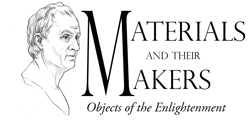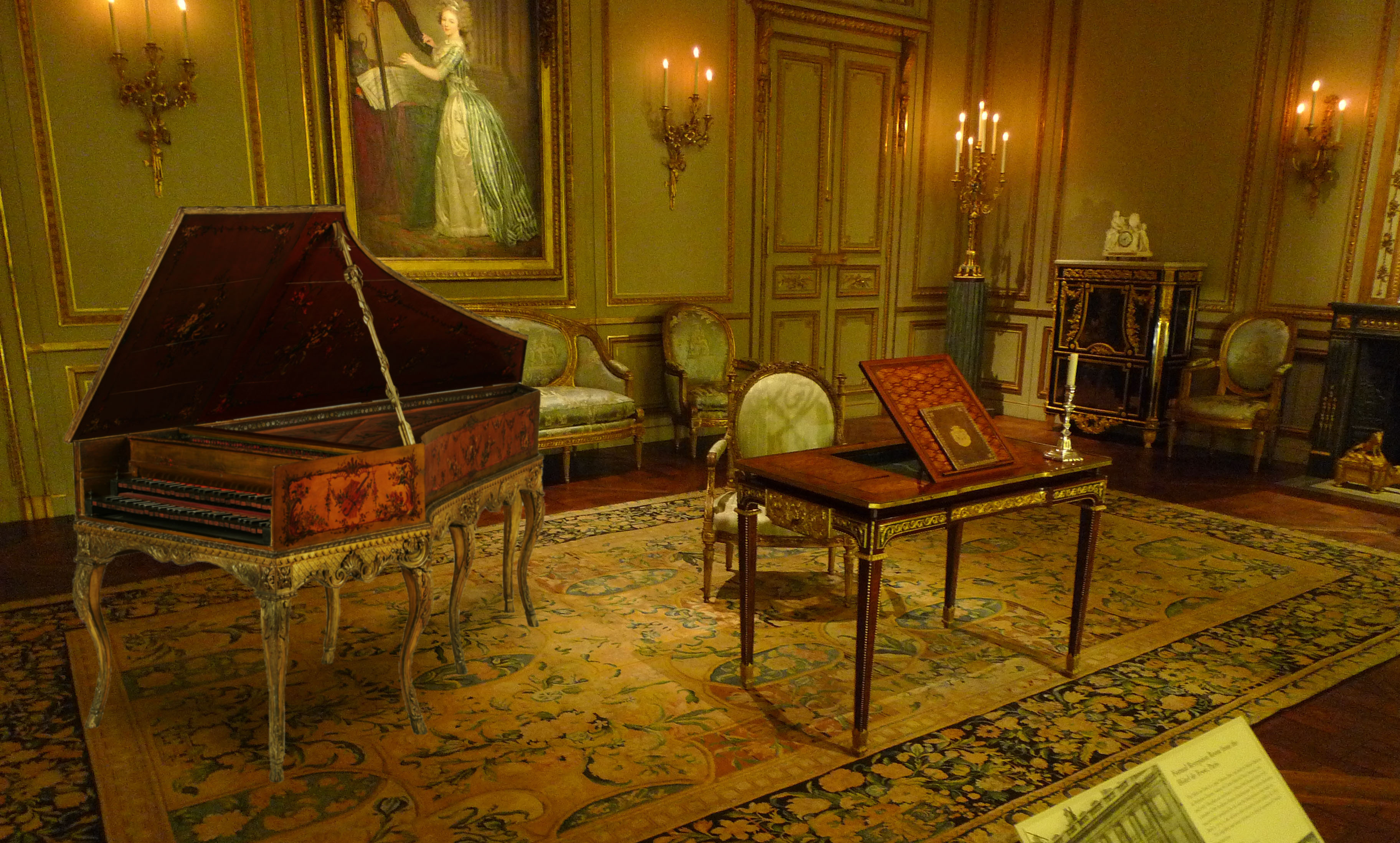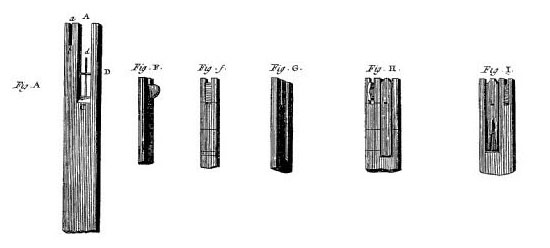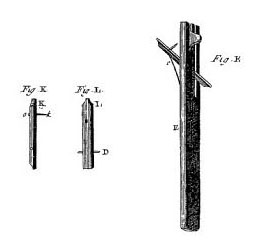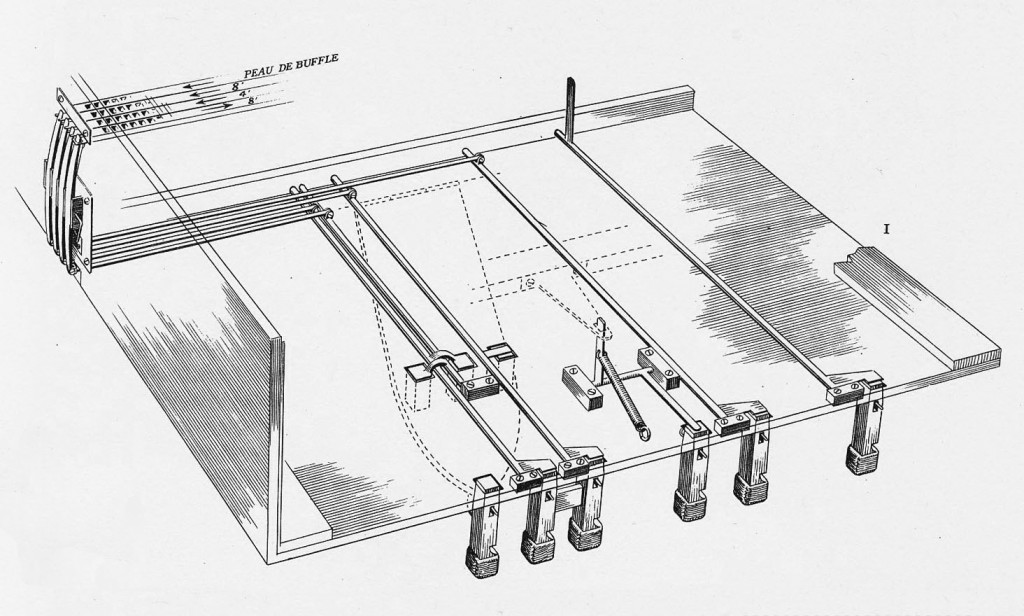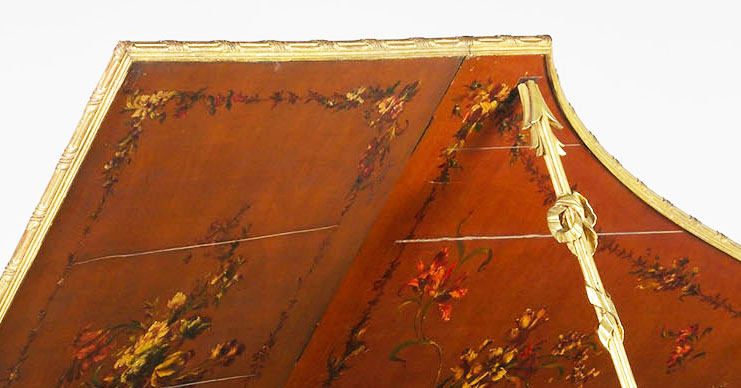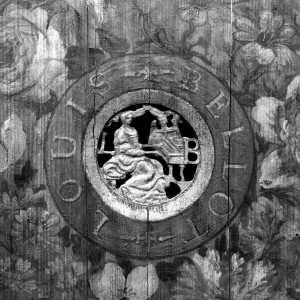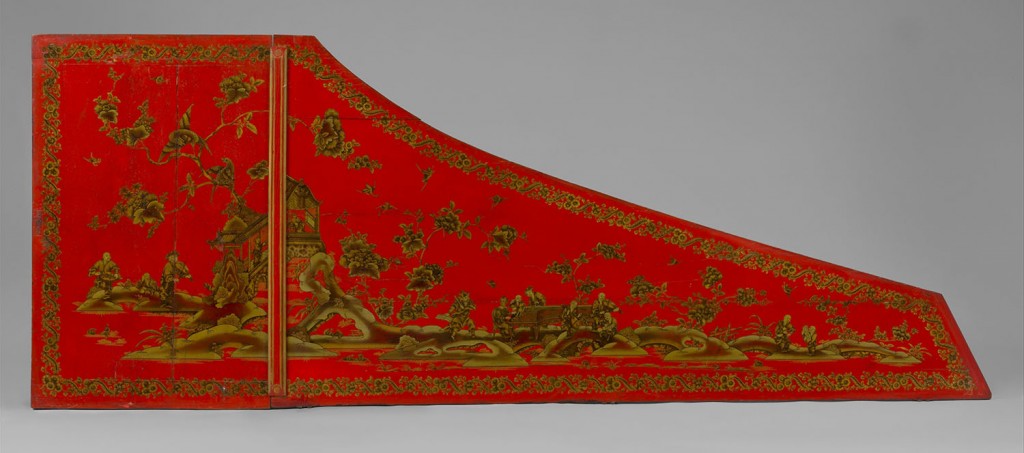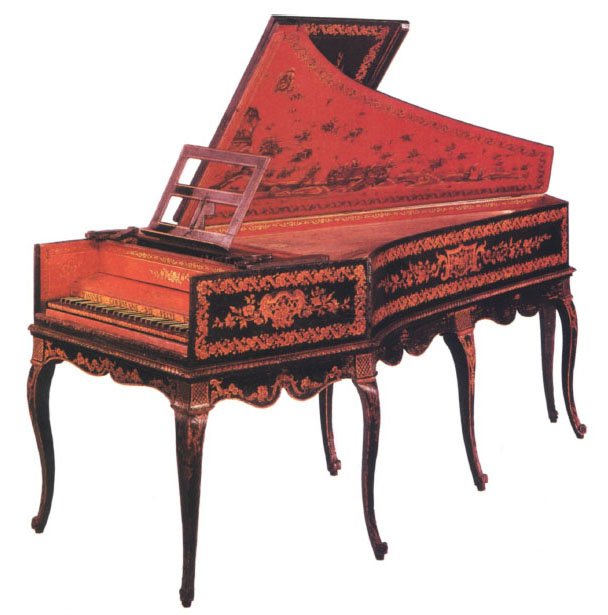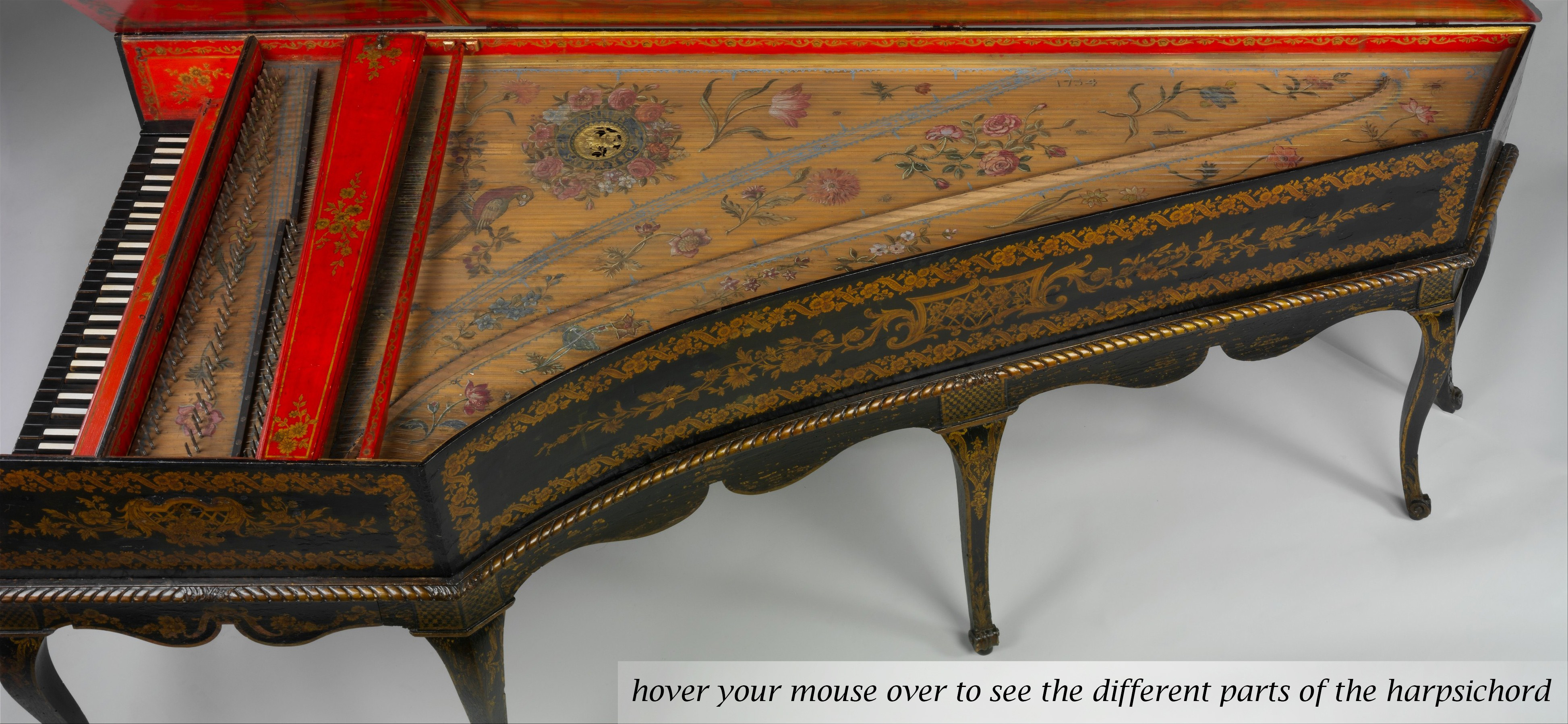
Playable furniture
The French harpsichord during the 18th century was carefully designed to be beautiful when heard and seen. Because of its large size, even when unplayed it functioned like a focal piece of furniture. During the 18th century, the instrument was altered mechanically to attempt to maintain its relevance despite changing musical tastes, while its exterior design reflected decorative trends.
Mechanics
The harpsichord is a mechanical stringed keyboard instrument. The sound it produces is the result of its strings being plucked by a quill, unlike the strings on a piano which are struck with mallets. The quill sticks out sideways from a wooden ‘tongue’, which swivels in a vertical chute at the end of the key called a ‘jack.’ The plectrum is beneath the string, such that when a key is pressed the jack rises and the plectrum plucks the string. When the key is released, the tongue moves to prevent the plectrum from plucking the string a second time. A damper silences the string and the plectrum is returned to rest by a spring.
Because the strings are mechanically plucked, each note produced is of the same level of volume and sound-quality which results in very crisp, clear melodies. Harpsichords often have at least two sets of strings and jacks, for different octaves. The 1742 Louis Bellot harpsichord- in the Met’s collection- has two sets of unison strings and one set of strings an octave higher. The upper keyboard plays one set of unison strings, while the bottom plays both the other unison set and the octave strings simultaneously. Playing multiple strings with one key is the only way to increase volume and create tonal contrasts.
Pascal Taskin, a harpsichord maker for the King in the late 18th century, developed and popularized mechanisms for the harpsichord to make the instrument more flexible in its qualities of sound level and tone. He improved upon a Dutch jack system in such a way that the force behind a player’s pressing of a string would be fairly proportional to the resistance of the string and plectrum when the string was plucked. Thus a player had greater control over the sounds produced.
Taskin also developed a system of knee-levers or genoullières which allowed a player to vary which choir of strings played. Previously, this was done manually by a player, which was a bit cumbersome. The knee lever allowed a player to do so mechanically, with little effort.
Surface Design
Designs on the harpsichord are created using paint, rather than the wood marquetry, gilt bronze, and inlaid porcelain techniques seen on other pieces of furniture. They are sometimes painted with patterns of chinoiserie, a type of motif that was popular in furniture decoration, as in the case of the Goerman harpsichord pictured. Guild regulations required that harpsichord builders hire freelance decorators to paint their instruments, rather than doing the decoration itself, creating networks of relationships between builders and decorators. It also wasn’t unusual for instruments to be sold with unpainted cases which the buyer would have decorated according to their tastes after purchase.
The rose, or soundhole, would be decorated first. Sometimes harpsichord makers used cast-iron circles with engravings of their names, as in the case of the rose of the 1742 Bellot harpsichord. The decorator would often use gouache or opaque watercolor paint on birds and garlands of flowers. These images, borrowed from those on older Flemish harpsichords, were meant to symbolize resurrection, just as the wood of the tree becomes transformed into a musical instrument. Often French harpsichords were made with old wood, whose cracks and imperfections were hidden through strategic placement of decoration.
The Rise of the Piano
The harpsichord fell out of favor at the end of the 18th century. Many French harpsichords from the 18th century were destroyed during the French Revolution and later used as firewood, so what is known about them is often based on records and drawings from sources like the Encyclopédie. The excerpt below, from a letter to Voltaire attributed to either Abbé Goujet or François Campion outlines some of the harpsichord’s shortcomings:
“The exorbitant price of a good harpsichord, the difficulty of moving it, the space that it occupies, the expense of its upkeep, the mystery of its tuning, of which the arbitrary temperament is founded only on long experience….[the] impossibility of increasing and diminishing the sound today repel women of good taste…”
Harpsichord’s competed unsuccessfully with the piano. The piano was preferred for its musical flexibility and range, which extended from pianissimo to forte. Despite the innovations of Pascal Taskin and other harpsichord makers, the sound of the harpsichord remained less controllable than the piano’s.
The change in public preference likely explains why the Goerman harpsichord was converted into a piano. However, after its conversion, this particular instrument became nearly impossible to play and was therefore likely used primarily for domestic ornament.
